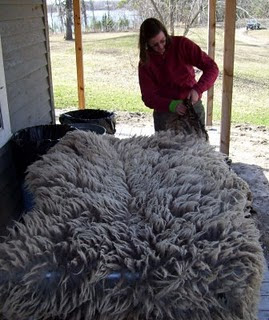HAPPY ANNOUNCEMENT!
Fine Fleece Shetland Sheep have returned to Boston Lake Farm as of July 18, 2020.
We purchased a small breeding flock from Kelly and Mike Bartles in Monroe, Wisconsin
and we are so excited to be raising "kindly" Shetlands again!
We practice rotational grazing at our farm. The portable "Electronet" is moved every few days, according to the growing season. This provides our sheep with fresh new grass to eat. It also reduces the dependence on chemical de-wormers since the sheep are exposed to fewer parasites in their grazing routine. Another benefit for the sheep is that they get to explore new territory every few days. Shetlands are curious animals and they seem to enjoy the constant moving. After the sheep have grazed down an area, we move them off of it and mow it with our lawn tractor. This knocks down any undesirable plants, like thistle, that the sheep did not eat.
Fine Fleece Shetland Sheep have returned to Boston Lake Farm as of July 18, 2020.
We purchased a small breeding flock from Kelly and Mike Bartles in Monroe, Wisconsin
and we are so excited to be raising "kindly" Shetlands again!
We practice rotational grazing at our farm. The portable "Electronet" is moved every few days, according to the growing season. This provides our sheep with fresh new grass to eat. It also reduces the dependence on chemical de-wormers since the sheep are exposed to fewer parasites in their grazing routine. Another benefit for the sheep is that they get to explore new territory every few days. Shetlands are curious animals and they seem to enjoy the constant moving. After the sheep have grazed down an area, we move them off of it and mow it with our lawn tractor. This knocks down any undesirable plants, like thistle, that the sheep did not eat.
Clancy mowing a new "line" for the fence to be set into. For more photos of our summer rotational grazing, click HERE.
For a few brief weeks in early spring there is not enough grass in any single location to support the flock for even a day. So we let the ewes and lambs out of their pen by the lambing shed during the day. They are free to roam the entire farm, thereby keeping themselves fed on the minimal grass and forest vegetation that is available. I have spent hours watching the flock while they are out and I believe they truly love this seasonal freedom. They continually wander, much like deer, rarely taking two bites in the same location before moving on. It also gives the lambs a chance to learn how to follow their mothers over greater distances. The flock gets lots of exercise after the months spent in the winter pens. Every evening, well before dusk, I call the flock back into the pen with a grain treat. They come RUNNING! and Clancy closes the gate behind them. This temporary routine trains the lambs to come to a grain bucket, which I have found to be the most practical method of moving sheep.
We usually try to shear the flock before lambing begins. It doesn't always work out that way, but that is the ideal for us here. I like to be able to see how the ewes bodies are developing. We hand shear or crutch (cut the wool off the back end of the ewe) if I expect some one to lamb early. We also hand shear the lambs we've wintered over for butcher so they can go to the processor in March. Shearing usually is scheduled for early April. Byron Johnson has been shearing our flock since 2007.
Sometimes friends and ladies from the local spinner's guild visit on shearing day to help us. This is Susan skirting a fleece in 2009.
We aim for mid-April lambing. Newborns are penned with their dams for about 5-7 days before I let them explore the great outdoors and meet other sheep. I like the lambs to be agile and sturdy before they meet the Electronet for the first time! Watching the lambs play and bounce is one of the greatest joys of shepherding.
Summer is usually lush in Northern Minnesota.
The Autumn colors are spectacular across the hay field.
We live at the end of a long lane. Sometimes it is quite a lot of work to plow ourselves out.
But Winter is a beautiful season.









